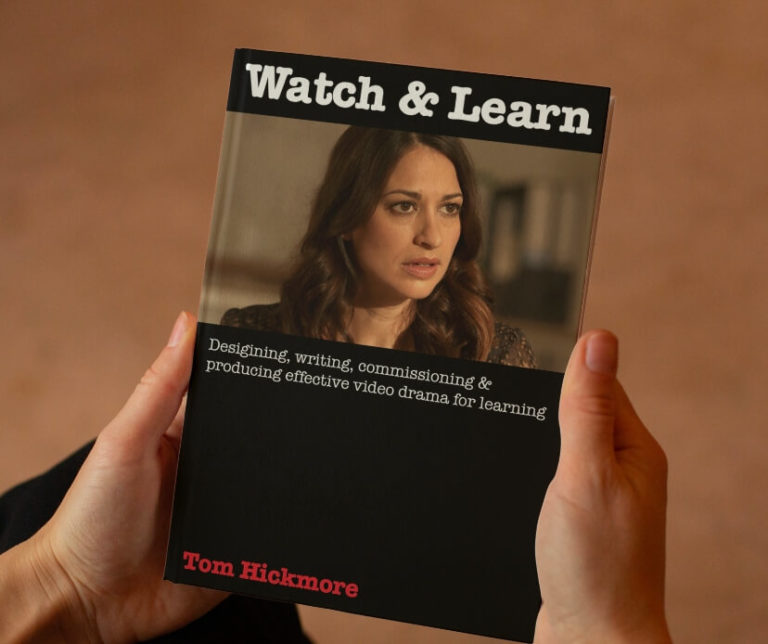A video series
I make drama for learning, so I’ve made a video series taking popular TV drama and looking at it with an analytical eye, asking “What can we learn from this that we can be applied in the field of learning and development?”
So far, I’ve made films about Gogglebox, It’s a Sin, Bridgerton, Spiral and The Queen’s Gambit. I aim to entertain while shedding light upon what methods we use in learning drama and what effects we can expect to achieve. Subjects include point-of-view, the anthropology of storytelling, dramatizing exposition, and appropriate use of drama.
Binge watching
During this pandemic, most of us have been watching a lot of TV, with high quality drama series being particularly relished.
So, now seems a good time to discuss drama for learning with all you L&D people out there. The power of drama is clearer than it has been for ages, but the knowledge within L&D of what it takes to produce a drama to get the effect you want is still thin on the ground.
One reason for this might be because we all watch so much drama it’s easy to feel like an expert. Filmic devices that draw most attention to themselves are the ones that make us feel this way – because it’s easy to see how they work. Devices such as first person, literal point of view, or superimposed captions that appear in a stylish manner so that a text conversation can be seen by the viewer. While such conspicuous devices have their place, we don’t want our designs to be led by an enthusiasm for them. I have often seen plenty of designs that have been led by inappropriate use of a filmic device that someone has got excited about, which has then been misapplied.
Key principles
One of the key principles of dramatic filmmaking is the dialectic. See one image, the thesis, then see another, the antithesis. Juxtaposed, they create a synthesis of meaning in our minds. This exceedingly simple principle is often overlooked, but it’s incredibly powerful. Creating a sequence in this way, very quickly meaning builds upon meaning and multiplies at an exponential rate.
Another key principle is point of view. Not the conspicuous literal point-of-view that’s become a cliché in L&D video, but the subtle creation of character point of view that comes from a deep understanding of characterization, shot sizes and angles.
And then there’s story. Much spoken of, but how well is it understood? As screenwriting guru Robert McKee observed, literary skill is common, but story skill is rare.
Getting it all down
So, I began to think, ‘maybe I should write a book to explain all these principles, so learning designers can design better drama and the people commissioning drama in L&D understand what it can (and can’t) do for them.’ So, I sat down and wrote the book and it’ll be coming out in due course.
Writing it allowed me to get my thoughts in order. I started to think about all those drama series that people are talking about and how, with our drama content, we bring some of that fun, enjoyment, and powerful messaging, into L&D. This is what led to my developing the idea for a video series in which I talk about popular TV shows and ask “what can this show teach us that can be applied to L&D?”
Would you like to make a request?
I’d love to know what you think. What TV drama have you seen during lockdown that has really made you think? I am taking requests!



